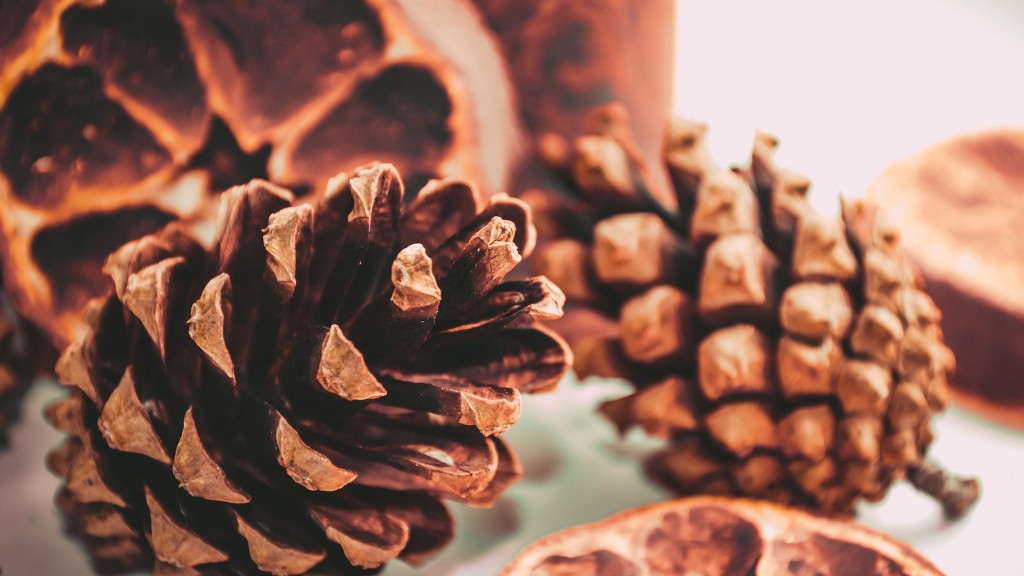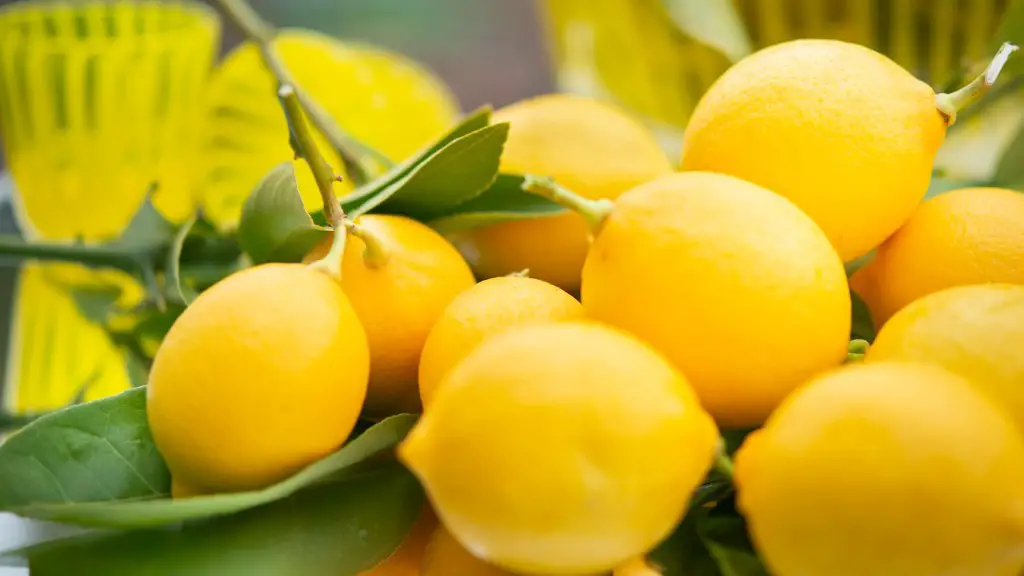Lemon trees are popular among gardeners for their unique foliage, fragrant aromas and sweet-tasting fruits. But, when it comes to choosing what to plant around the lemon tree, many people are at a loss. Here are some ideas to consider when planning what to plant around a lemon tree.
One of the most important concerns when growing plants around a lemon tree is ground moisture. The acidic soil of a lemon tree can dry out quickly, so it is best to select plants that are well suited to dry, sunny conditions. Succulents and cacti, ornamental grasses, and shrubs with low water requirements such as yucca and agave are all excellent choices for surrounding a lemon tree.
The location of the lemon tree should also be taken into consideration when choosing surrounding plants. Tall plants that have the potential to become top-heavy should be positioned far enough away from the lemon tree to avoid disrupting the stability of its branches. Additionally, it is important to consider the rate at which the plants will grow, in order to ensure adequate spacing and regular pruning.
The texture and color of the surrounding plants should also be taken into account. Dense and fine foliage can complement the lemon tree’s leathery leaves, while colors such as blues and greens can provide contrast. Variegated plants, such as daylilies, may help create an eye-catching display.
Finally, plant diversity should be a key consideration when planning a lemon tree’s surroundings. Covering the area with a range of diverse species can provide a stronger immune environment and prevent potential problems, such as pests and diseases. When selecting the plants, look for species with different deficiencies, so they can supplement each other.
Soil Types
The soil around a lemon tree can have a significant impact on the health of surrounding plants. Soils with good drainage and a neutral to slightly acidic pH will beneficially influence the root system and provide essential nutrients to the plants. Compost and mulch can be used to condition the soil and, where required, heavy clay can be improved with the addition of gypsum.
It is also important to ensure regular soil maintenance to maintain optimum plant health. mulching can help retain moisture, prevent soil compaction, reduce weeds and add fertility. If a fertiliser is required, organic options made from compost and manures can be used rather than chemical based alternatives.
Finally, organic mulches, such as wood chips, can be used as a barrier between the roots of the lemon tree and the surrounding terrain. This will prevent encroachment of the lemon tree’s roots, while still providing protection against the sun, cold and pests.
Native Plants
When the area around a lemon tree is in a local climate that supports native plants, these are the best species to consider. Sage, lavender, poppies and mallow are all excellent options and will not require as much upkeep as exotic species. Moreover, native plants attract local wildlife, such as birds, bees and butterflies, which can be beneficial for the local ecosystem.
However, there are some notable exceptions of native plants that should be avoided. Thorny, invasive species should be avoided as these can damage the tree, particularly if the branches are too close together. Additionally, weeds possess an even greater risk since they have the potential to undermine the tree by stealing or diverting essential nutrients from its roots.
All native plants will require regular maintenance and should be pruned, watered and mulched when necessary. For example, certain types of lavender will require pruning every few years to prevent it from becoming woody, while water retaining mulches can be beneficial for avoiding dehydration.
Climbing Vines
Climbing vines are an attractive option for when choosing what to plant around a lemon tree. Popular varieties such as Trumpet Creeper, Morning Glory and Confederate Jasmine all provide a scenic backdrop, while low maintenance climbers such as Bougainvillea and Japanese Wisteria can help provide a vibrant splash of color.
When planting climbing vines, ensure there is plenty of width between vines and the lemon tree. The vine should also have adequate support so it will not cause any damage to the trunk over time. Stake the base of the vine, or Trellis it further away from the tree so it can support itself.
The location of a climbing vine is also important. Vines with large leaves will require proper sunlight, at least 4 hours of direct light each day, in order to ensure maximum vibrancy. In contrast, vines with small flowers may be better suited to more shaded locations.
Finally, water is an important consideration when growing climbing vines. Being an evergreen plant with a high rate of evaporation, these plants require plenty of water. While they can handle periods of drought, it is best to water them regularly so they can perform optimally.
Annuals
Annual plants, such as pansies and petunias, are a good option for providing colour and life to the area surrounding a lemon tree. They require minimal maintenance and can be expected to last several months in a temperate climate. These plants should be planted in spring and removed in autumn, depending on their growth rates.
If the area is smaller, then dwarf annuals are a great option. These reach their full size around three months after planting and provide ample coverage without overcrowding. Ideal choices include zinnias, cosmos, calendula and cornflowers.
Finally, annuals can be planted directly into the ground, or in containers. If the latter option is chosen, it is important to select large enough containers to ensure the plants can develop a root system to support their growth. Moreover, the containers should be regularly nourished with a high quality, organic potting mix.
Herbs and Vegetables
Herbs and vegetables provide an easy way to add both flavor and nutrition to the area surrounding a lemon tree. Many of these plants possess a wide range of health benefits due to their high concentrations of essential nutrients, antioxidants and vitamins.
Herbs such as thyme, chives and basil are all local climate compatible with the acidic soil of a lemon tree. While vegetables such as lettuce, carrots and zucchini are ideal to plant in early spring, when the soil is moist and cool. Together, these can create an interesting and diverse display.
Herbs and vegetables require nutrient-rich soil, adequate sunlight and regular watering to thrive. If the lemon tree is in full sun, then be sure to keep the newly planted herbs and vegetables in partial shade so they can adjust to the sun gradually. This can help to reduce the stress of sudden environmental changes.
Finally, when choosing herbs and vegetables, it is important to take into consideration their size. This will help ensure a balanced display and enable adequate spacing for the plants to reach their full growth potential.
Aromatics
Aromatic plants are a great addition to any garden, but they can be particularly useful when choosing what to plant around a lemon tree. These plants can help to create a pleasant atmosphere and repel pests with their powerful, yet pleasant smells.
Lemon trees are often the target of undesired pests and the addition of aromatics can reduce the likelihood of attack. Species such as petunias, rosemary and lavender can help to repel aphids, slugs and Japanese beetles, while nasturtiums, basil and garlic can protect against caterpillars, fleas and whiteflies.
If the area is smaller and not suitable for large plants, then essential oils can provide a viable alternative. These can be sprayed directly onto the leaves of the lemon tree, although care should be taken not to over spray as this may harm the tree.
Finally, for extra protection, companion planting can be used around the perimeter of the lemon tree. Combining a wide variety of plants with different scents and grow heights will provide a stronger immune environment and can help guard against pest infestations.


